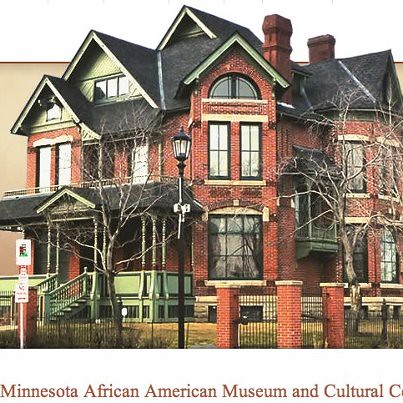
From the May 2012 issue of the Minnesota Monthly, "Say It Loud: Roxanne Givens on the long march to opening the state’s first black history museum," Interview by Tim Gihring -- It’s been two centuries since the first black settlers arrived in Minnesota, and 40 years since Roxanne Givens’s father, Archie, began his namesake foundation, having become the state’s first black millionaire. Roxanne is now leading the volunteer effort to open the Minnesota African American Museum and Cultural Center near the Minneapolis Convention Center, revealing a long-neglected heritage. We caught up with her inside the museum, housed in the former Coe Mansion, where a portrait of Archie hangs near the door.
This house is fabulous. How did you find it?
I was driving by and I was lost—me, a sixth-generation Twin Citian. So I pulled over in front of this place, and I noticed it had a “for sale” sign. I said, “I have to check this out.” It screamed museum!
Minnesota has never had an African American museum before. What has that meant?
It’s meant there’s never been a repository for African Americans to leave their heritage. So people trashed everything: photos, books, clothes, heirlooms. Our first exhibit will be on African American baseball teams in rural Minnesota, and we had to hunt for photos and uniforms. Without these things, the knowledge evaporates.
And then you’ve lost your roots.
Exactly. And if you don’t know who you are, neither do other people. When we were looking for money to open the museum, people said, “What are you talking about, African Americans just got here in the 1960s.” Or, “Your numbers are so small here, how could you have contributed anything?”
How did you learn your own history?
My family was always telling stories, though my father was orphaned at about 16. It helped to know who I was because you have to feel like you’re a part of the fabric to make a contribution to society.
What about black history in general?
As a teenager in the late 1960s, I traveled to southern cities and I knew there was another way for African Americans to exist, keeping that history alive. I started interviewing relatives. I have tapes full of stories. So I knew about Fred Jones [from Minneapolis] who invented the snowmobile and truck refrigeration and had 60 patents. I knew that Willie Mays played for the Minneapolis Millers. You also have to remember, the North Side was bustling then. There was more African American history around when I was growing up than there is now.

Some of that history is ugly, like the 1920 lynchings in Duluth. Will the museum include this side, as well?
All of it—the good, the bad, and the ugly. The key is having context. For instance, we got a call from the Hennepin History Museum that they have this Ku Klux Klan hood. Well, how do we display it? Is it too provocative? An artifact without the right programming isn’t going to have much value.
Did you always feel like you belonged in Minnesota?
When I graduated from high school, I couldn’t wait to leave. This place didn’t answer my social needs as a young African American woman. I always saw the beauty in an African American lifestyle and that was lacking here. We aren’t Atlanta or Memphis. But I came back to raise a family. I’m here for now—and I’ve been saying that for 30 years!
The African American Museum and Cultural Center opens its first exhibit, Bringing It Home, about black baseball in Minnesota, on June 1. Visit maamcc.org for details. [source: Tim Gihring is a senior editor for Minnesota Monthly.]
New Museums in Trying Times from Minnesota Association of Museums on Vimeo.


kybd93vzc
ReplyDeletegolden goose outlet
golden goose outlet
golden goose outlet
golden goose outlet
golden goose outlet
golden goose outlet
golden goose outlet
golden goose outlet
golden goose outlet
golden goose outlet